Maintaining Beautiful Roses All Year Round
Roses are often referred to as the queens of the garden, and for good reason! Their vibrant colors, enchanting fragrances, and elegant forms can transform any outdoor space into a breathtaking sanctuary. However, nurturing these beauties throughout the year requires more than just a sprinkle of water and a dash of sunlight. Are you ready to dive into the world of rose care and discover the secrets to keeping your roses healthy and blooming all year round? In this article, we'll explore essential tips and techniques that will empower you to maintain stunning roses, no matter the season.
First things first: understanding the different rose varieties is crucial. Did you know that not all roses are created equal? Each type comes with its own unique needs and characteristics. For instance, hybrid teas are known for their large blooms and long stems, making them perfect for cut flowers, while floribundas offer clusters of smaller flowers that provide a more abundant display. By recognizing the specific requirements of the roses you choose, you can tailor your care strategies to ensure they thrive.
Next up is soil preparation and fertilization. Healthy soil is the foundation for strong rose growth. Think of it as the bedrock of your garden—without it, your roses may struggle to flourish. To kick things off, you should test your soil to understand its composition and pH levels. A pH level between 6.0 and 6.8 is ideal for roses. If your soil is too acidic or alkaline, you can amend it with lime or sulfur to create a more hospitable environment.
When it comes to fertilization, the debate between organic and chemical fertilizers is ongoing. Each has its advantages and disadvantages. Organic fertilizers, such as compost or well-rotted manure, enrich the soil and promote healthy microbial activity, but they may release nutrients more slowly. On the other hand, chemical fertilizers can provide quick results but may lead to nutrient imbalances or soil degradation over time. So, what's the best choice for your roses? It depends on your gardening philosophy and the specific needs of your plants.
Timing is everything! Knowing when to fertilize your roses can significantly impact their growth potential. Generally, you should fertilize in early spring as new growth begins and again in mid-summer. Avoid fertilizing late in the season, as this can encourage new growth that won't have time to harden off before winter.
Now, let's talk about watering techniques. Proper watering is vital for rose health. Roses prefer deep, infrequent watering to encourage strong root systems. Watering in the early morning helps prevent diseases and allows the foliage to dry out during the day. Avoid overhead watering to reduce the risk of fungal diseases, and instead, aim for a soaker hose or drip irrigation system that delivers moisture directly to the roots.
Despite your best efforts, roses can sometimes fall prey to pests and diseases. Understanding how to manage these threats is key to maintaining their beauty. From aphids to black spot, recognizing the signs of common rose pests and diseases early can save your plants from significant damage. Implementing preventative measures, such as good air circulation and proper spacing, can also help keep your roses thriving.
As the seasons change, so do the needs of your roses. Seasonal care tips are essential for ensuring your roses remain healthy and vibrant. In spring, focus on pruning to encourage new growth and remove any dead or diseased wood. Summer care involves regular deadheading to encourage continuous blooming. As fall approaches, it's time to prepare your roses for winter by applying mulch and protecting them from harsh conditions.
In winter, protecting your roses is crucial for their survival. Insulating them with mulch or burlap can help shield them from extreme cold and frost. Remember, a little preparation goes a long way in ensuring your roses come back strong in the spring!
- How often should I water my roses? Water deeply once a week, increasing frequency during hot, dry spells.
- What is the best time to prune roses? Spring is the ideal time for pruning to promote healthy growth.
- How can I tell if my roses are getting enough nutrients? Yellowing leaves or poor blooms may indicate nutrient deficiencies.
- What are the signs of common rose pests? Look for discolored leaves, webbing, or tiny insects on the stems and buds.
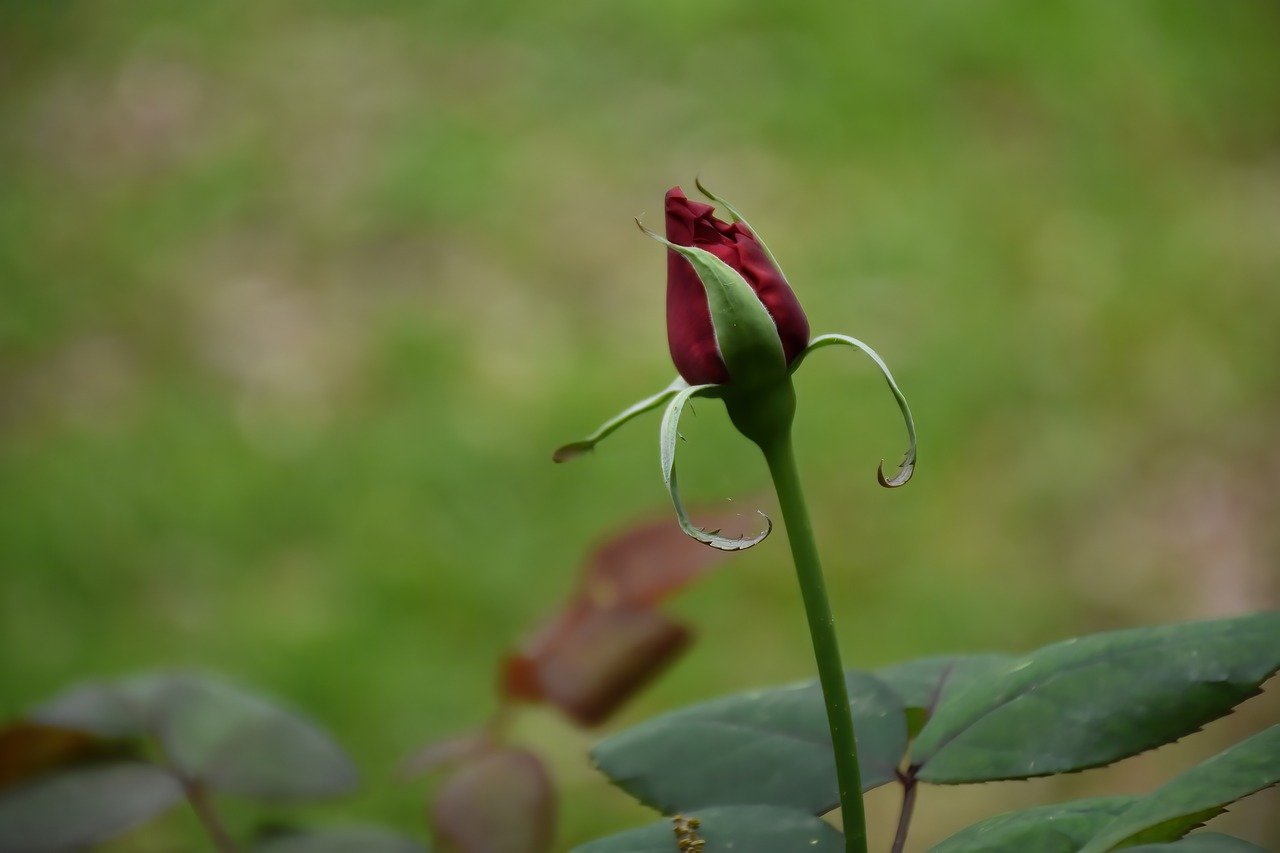
Understanding Rose Varieties
When it comes to roses, variety truly is the spice of life! With over 150 species and thousands of cultivars, choosing the right type for your garden can feel like a daunting task. However, understanding the unique characteristics of different rose varieties can help you select the best options that not only align with your aesthetic preferences but also thrive in your specific climate and soil conditions.
Let’s dive into some of the most popular rose varieties and their specific care requirements. First up, we have the classic Hybrid Tea Roses. Known for their stunning, large blooms and long stems, these roses are perfect for cutting gardens. They flourish in full sun and require regular watering and fertilization to produce those breathtaking blossoms. On the other hand, if you’re looking for something a bit more resilient, consider Knock Out Roses. These beauties are not only disease-resistant but also bloom continuously throughout the growing season, making them a favorite among gardeners who want low-maintenance options.
Another fascinating category is Climbing Roses, which can transform any trellis or fence into a floral masterpiece. They do require a sturdy support structure and regular pruning to keep them in check, but their cascading blooms can create a stunning visual impact. For those with limited space, Miniature Roses are a delightful choice. These compact plants are perfect for containers and small gardens, providing vibrant color without taking up too much room.
Understanding the specific needs of each variety is essential for successful cultivation. For instance, while most roses prefer well-drained soil and plenty of sunlight, some varieties, like English Roses, thrive in slightly shadier conditions. This adaptability can be a game-changer for gardeners dealing with less-than-ideal growing conditions.
To help you navigate the world of rose varieties, here’s a quick comparison table:
| Rose Variety | Bloom Size | Sun Requirements | Maintenance Level |
|---|---|---|---|
| Hybrid Tea Roses | Large | Full Sun | Medium |
| Knock Out Roses | Medium | Full Sun | Low |
| Climbing Roses | Medium to Large | Full Sun | High |
| Miniature Roses | Small | Full Sun | Low |
| English Roses | Medium to Large | Partial Shade | Medium |
Ultimately, the key to a thriving rose garden lies in selecting the right varieties that suit your lifestyle and garden conditions. Whether you’re drawn to the elegance of Hybrid Tea Roses or the resilience of Knock Out Roses, each variety offers its own charm and beauty. So, take the time to explore and understand these stunning plants, and you’ll be rewarded with a garden that’s not just beautiful but also bursting with life throughout the seasons.
Q: How do I choose the right rose variety for my garden?
A: Consider your climate, soil type, and the amount of sunlight your garden receives. Research different varieties to find those that thrive in your specific conditions.
Q: Are there roses that require less maintenance?
A: Yes! Knock Out Roses and Miniature Roses are excellent low-maintenance options that still provide beautiful blooms.
Q: Can I grow roses in containers?
A: Absolutely! Many rose varieties, especially Miniature Roses, do well in containers. Just ensure they have enough sunlight and proper drainage.

Soil Preparation and Fertilization
When it comes to nurturing your roses, healthy soil is the foundation of success. Think of your roses as a house plant; without a solid base, everything else falls apart. The right soil not only provides essential nutrients but also ensures that water can drain properly, preventing root rot. Different rose varieties thrive in different soil types, so it's crucial to know what you're working with. Generally, roses prefer loamy soil—a mix of sand, silt, and clay that offers the best balance of drainage and nutrient retention. Before planting, take the time to assess your soil and prepare it accordingly.
Soil preparation involves several steps. First, you'll want to test your soil to determine its current nutrient levels and pH. Testing kits are widely available at garden centers or online, and they can give you a clear picture of what your soil needs. Ideally, the pH level for roses should be between 6.0 and 6.8. If your soil is too acidic or alkaline, you can amend it with lime or sulfur, respectively, to create a more hospitable environment for your blooming beauties.
Understanding pH levels can significantly impact rose health. A soil test is a straightforward process that can be done with a simple kit or by sending a sample to a lab. Once you have your results, you can make adjustments as needed. For example, if your soil is too acidic, consider adding dolomitic lime to raise the pH. Conversely, if it's too alkaline, you might want to incorporate elemental sulfur to bring it down. Regular testing every few years can help you maintain an optimal growing environment.
The debate between organic and chemical fertilizers is ongoing among gardeners. Organic fertilizers are derived from natural sources, such as compost, bone meal, or fish emulsion, and they release nutrients slowly over time. This slow release can be beneficial for long-term plant health. On the other hand, chemical fertilizers provide a quick nutrient boost, which can be appealing for immediate results. However, they can sometimes lead to nutrient burn if not used carefully. Ultimately, the choice depends on your gardening philosophy and your roses' specific needs.
| Fertilizer Type | Pros | Cons |
|---|---|---|
| Organic | Environmentally friendly, improves soil structure | Slower to show results |
| Chemical | Quick results, easy to apply | Risk of nutrient burn, can harm beneficial microbes |
Knowing when to fertilize is key to rose care. The timing can make all the difference in how your roses perform throughout the growing season. Generally, you should fertilize roses in early spring, just as they start to bud, and then again after the first bloom. This encourages new growth and supports the plant as it produces more flowers. Some gardeners opt for a third application in late summer to prepare the roses for the next blooming cycle. However, be cautious not to fertilize too late in the season, as this can lead to tender growth that may not survive the winter.
In summary, proper soil preparation and fertilization are essential components of rose care. By understanding your soil, using the right fertilizers, and timing your applications correctly, you can ensure that your roses remain vibrant and healthy all year round. Remember, a little attention to detail goes a long way in creating a stunning rose garden!
Q: How often should I test my soil?
A: It's advisable to test your soil every 2-3 years to monitor pH and nutrient levels.
Q: Can I use leftover kitchen scraps as fertilizer?
A: Absolutely! Kitchen scraps like vegetable peels and coffee grounds can enrich your soil when composted properly.
Q: What is the best time of year to plant roses?
A: The best time to plant roses is in the spring or fall when the weather is cooler, allowing the roots to establish before the heat of summer or the cold of winter.
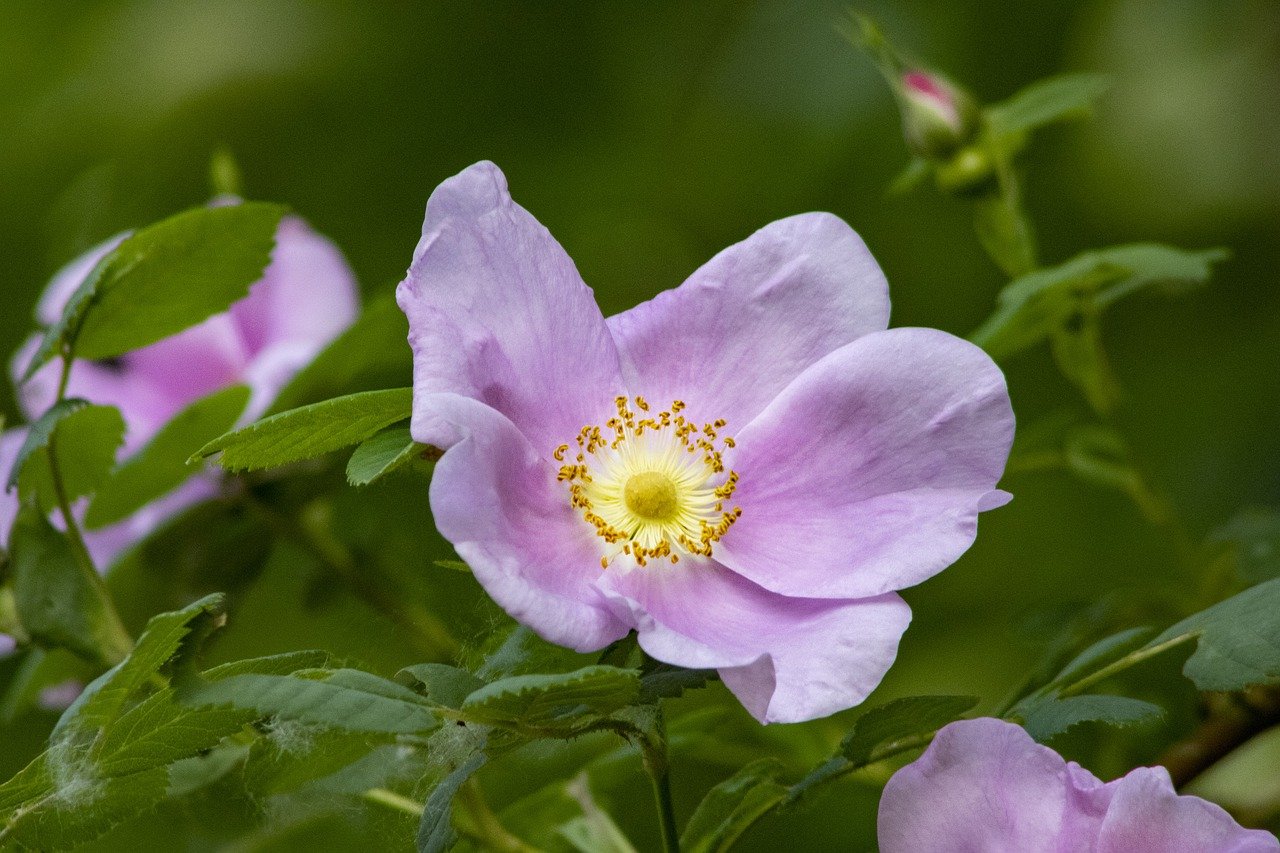
pH Levels and Soil Testing
Understanding the pH levels of your soil is like having the secret recipe for a delicious cake—it can make all the difference in your rose garden! Roses thrive best in a slightly acidic environment, ideally with a pH level between 6.0 and 6.8. If your soil is too acidic or too alkaline, it can hinder nutrient absorption, leading to weak growth and lackluster blooms. So, how do you find out what your soil's pH is? It's simpler than you might think!
First, you'll need a soil test kit, which you can purchase at garden centers or online. These kits usually come with easy-to-follow instructions. To get started, gather a soil sample from various spots in your garden, about 6 inches deep. Mix these samples together in a clean container to create a composite sample. Then, follow the kit's instructions to test the pH level. It's like a little science experiment right in your backyard!
If your test reveals that your soil's pH is outside the ideal range, don’t panic! There are several ways to adjust it:
- To raise pH (make it more alkaline): You can add lime to your soil. It's a natural amendment that not only raises pH but also adds calcium.
- To lower pH (make it more acidic): Incorporating sulfur or organic materials like pine needles and peat moss can help.
After adjusting the pH, it’s essential to retest your soil after a few weeks to ensure that the changes have taken effect. Remember, maintaining the right pH is an ongoing process, much like tending to a garden. Regular testing—ideally once a year—will help you keep your roses happy and thriving.
In summary, understanding and managing your soil's pH levels is crucial for the health of your roses. By conducting regular soil tests and making necessary adjustments, you can create an environment that fosters vibrant blooms and strong growth. So, roll up your sleeves and get ready to dig into the science of soil!
1. How often should I test my soil's pH?
It’s recommended to test your soil’s pH at least once a year, especially before planting new roses or making significant changes to your garden.
2. Can I use household items to test my soil's pH?
While there are DIY methods using vinegar and baking soda, they are not as accurate as commercial soil test kits. For reliable results, it’s best to invest in a proper kit.
3. What should I do if my soil's pH is perfect?
If your soil's pH falls within the ideal range (6.0 to 6.8), simply focus on maintaining soil health through good watering practices and regular fertilization. Your roses will thank you!
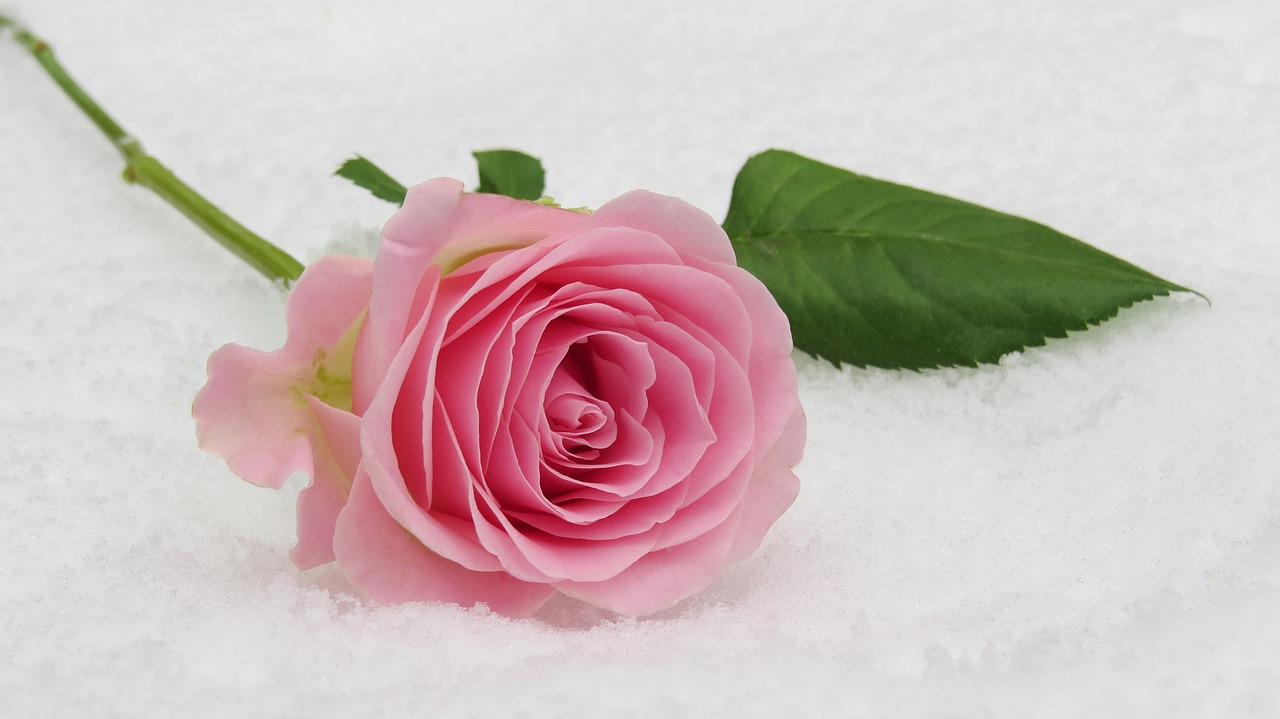
Organic vs. Chemical Fertilizers
When it comes to feeding your roses, the choice between organic and chemical fertilizers can feel like a tug-of-war between two passionate sides. Each option has its own set of advantages and disadvantages, and understanding these can help you make the best decision for your garden. Organic fertilizers, often derived from natural sources such as compost, manure, or bone meal, are known for improving soil health over time. They not only provide essential nutrients but also enhance the soil's structure and microbial activity, leading to a thriving ecosystem that supports your roses. However, they tend to release nutrients more slowly, which may require more frequent applications to meet the needs of your plants.
On the flip side, chemical fertilizers offer a quick nutrient boost, allowing your roses to absorb what they need almost immediately. This can be particularly beneficial during critical growth periods or when your roses show signs of nutrient deficiency. However, the downside is that they can lead to nutrient leaching and soil degradation if used excessively. Moreover, they often contain synthetic compounds that could potentially harm beneficial microorganisms in the soil.
To help you weigh your options, here’s a quick comparison:
| Aspect | Organic Fertilizers | Chemical Fertilizers |
|---|---|---|
| Nutrient Release | Slow and steady | Fast-acting |
| Soil Health | Improves soil structure and microbial activity | Can degrade soil quality over time |
| Environmental Impact | Lower, more sustainable | Higher, potential runoff issues |
| Cost | Generally more expensive | Often cheaper and more accessible |
Ultimately, the choice between organic and chemical fertilizers depends on your gardening philosophy and the specific needs of your roses. If you’re looking for a more sustainable approach that nurtures the entire ecosystem, organic fertilizers may be your best bet. But if you need quick results, especially in a pinch, chemical fertilizers can do the trick. Many gardeners find success by using a combination of both, tailoring their approach based on the season and the health of their plants.
- Can I switch between organic and chemical fertilizers? Yes, many gardeners switch between the two based on their roses' needs and the season.
- How often should I fertilize my roses? Generally, fertilizing every 4-6 weeks during the growing season is recommended, but this can vary based on the type of fertilizer used.
- Are organic fertilizers more effective than chemical ones? It depends on the specific needs of your roses and your gardening goals. Organic fertilizers improve soil health over time, while chemical fertilizers provide immediate results.

Timing Your Fertilization
When it comes to nurturing your roses, timing is everything. Just like a well-timed dance, the right moment to fertilize can lead to stunning blooms and robust plants. Roses have specific growth cycles throughout the year, and understanding these cycles is crucial for optimal health. Generally, the best times to fertilize your roses are in early spring, mid-summer, and early fall. But let’s break this down further.
In early spring, as the frost begins to thaw and new growth starts to appear, it’s time to give your roses a boost. This is the moment when they awaken from their winter slumber, and a balanced fertilizer will help them kick off the growing season. Look for a fertilizer with a higher nitrogen content during this phase, as nitrogen promotes leafy growth. You might consider using a slow-release granular fertilizer, which will provide nutrients gradually.
Moving into mid-summer, your roses will be in full bloom, and they’ll need another round of nourishment to sustain their vibrant flowers. At this stage, a fertilizer higher in phosphorus can be beneficial, as phosphorus encourages blooming. Applying a liquid fertilizer during this time can also be effective, as it allows for quicker absorption by the roots. Just be cautious not to over-fertilize, as this can lead to excessive foliage growth at the expense of blooms.
As we transition into early fall, it’s essential to prepare your roses for the upcoming winter. This is when you should switch to a fertilizer that has lower nitrogen levels and higher potassium content. Potassium helps strengthen the plant’s roots and enhances its overall resilience against cold weather. Applying this type of fertilizer in late September or early October can set your roses up for a successful winter dormancy.
To summarize, here’s a quick reference table for your fertilization schedule:
| Season | Type of Fertilizer | Purpose |
|---|---|---|
| Early Spring | High Nitrogen | Promotes leafy growth |
| Mid-Summer | High Phosphorus | Encourages blooming |
| Early Fall | Low Nitrogen, High Potassium | Strengthens roots for winter |
In conclusion, understanding the timing of your fertilization can make a world of difference in the health and beauty of your roses. By following these guidelines, you can ensure that your roses receive the right nutrients at the right time, leading to stunning blooms that will turn heads in your garden. Remember, a little attention to detail goes a long way in the world of rose gardening!
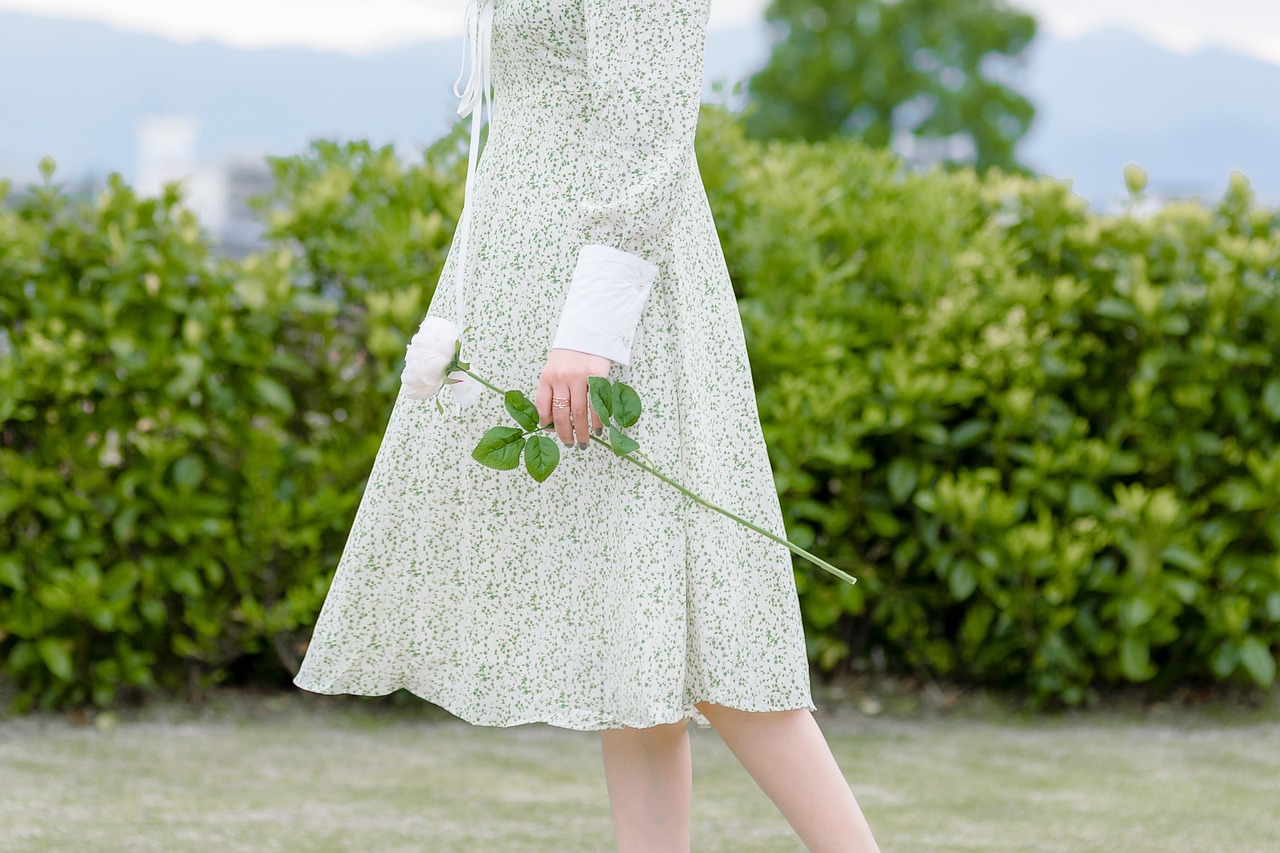
Watering Techniques
When it comes to keeping your roses healthy and vibrant, play a crucial role. Think of watering as giving your roses a refreshing drink on a hot summer day; they thrive on it! But it’s not just about how much you water them; it’s about how and when you do it. Roses, like us, have preferences, and understanding those can make a world of difference in their growth and bloom.
First off, let’s talk about the frequency of watering. Generally, roses need about an inch of water per week, but this can vary depending on the weather conditions. During the hot summer months, you may need to increase that to two inches, especially if your roses are in full sun. On the flip side, in cooler months, you can scale back. A good rule of thumb is to check the soil moisture by sticking your finger about an inch deep into the soil. If it feels dry, it’s time to water!
Now, how you water is just as important as when you water. Deep watering is the way to go. This means giving your roses a good soak, allowing the water to penetrate deep into the root zone. A soaker hose or drip irrigation system can be incredibly effective, delivering water directly to the roots without wetting the foliage. This method not only conserves water but also helps prevent diseases that can arise from wet leaves. If you prefer to use a traditional hose, aim to water at the base of the plant rather than overhead.
Timing is key as well. The best time to water your roses is early in the morning. This allows the plants to absorb moisture before the heat of the day kicks in, reducing evaporation. Plus, it gives the foliage a chance to dry out before evening, minimizing the risk of fungal diseases. If mornings aren’t feasible, late afternoon can work too, just ensure that the leaves have enough time to dry before nightfall.
Another important aspect of watering is the type of water you use. If possible, use rainwater or distilled water, which is free from chemicals and additives found in tap water. However, if you must use tap water, let it sit out for a day to allow chlorine to dissipate. This simple step can make a significant difference in the health of your roses.
Lastly, keep an eye out for signs of overwatering or underwatering. If the leaves are turning yellow, it could be a sign of too much water, while wilting leaves can indicate that your roses are thirsty. Adjust your watering schedule accordingly to keep your roses looking their best.
In summary, mastering the art of watering your roses involves understanding their needs and adapting your techniques accordingly. By providing the right amount of water, at the right time, and in the right way, you’ll set your roses up for a season of stunning blooms and robust growth.
Q: How often should I water my roses?
A: Generally, roses need about an inch of water per week, but this can vary based on weather conditions. During hot weather, you may need to increase this to two inches.
Q: Is it better to water in the morning or evening?
A: The best time to water roses is early in the morning. This allows the plants to absorb moisture before the heat of the day and helps prevent fungal diseases.
Q: Can I use tap water for my roses?
A: Yes, but it’s best to let tap water sit out for a day to allow chlorine to dissipate. Rainwater or distilled water is preferable if available.
Q: What are the signs of overwatering?
A: Yellowing leaves can indicate overwatering, while wilting leaves may suggest that the roses are thirsty. Adjust your watering schedule based on these signs.
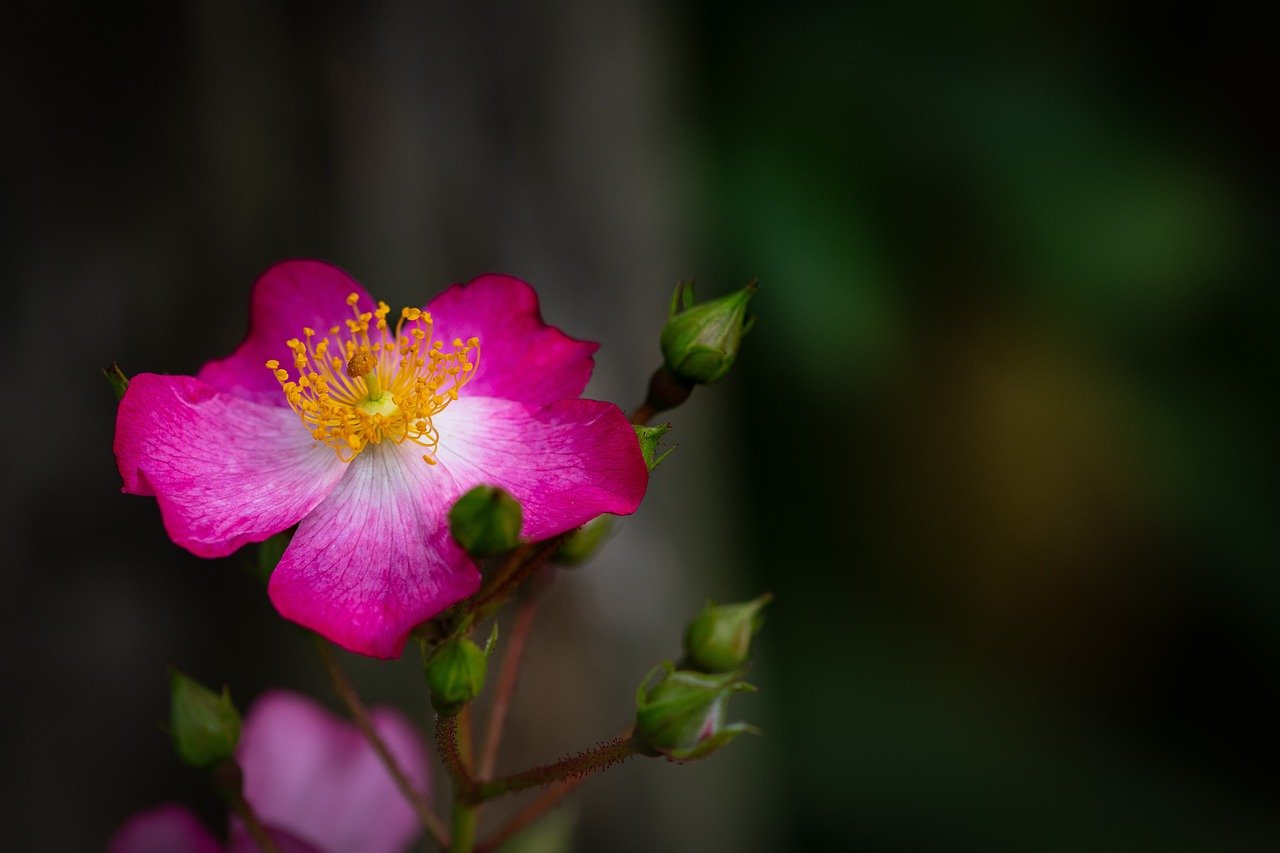
Pest and Disease Management
Roses, while being one of the most beautiful flowers in any garden, are also prone to a variety of pests and diseases that can threaten their health and vibrancy. Managing these issues effectively is crucial for maintaining the stunning beauty of your rose plants. Just like a knight needs armor to protect themselves in battle, your roses need a solid defense against these invaders. By understanding the common threats and implementing effective management strategies, you can ensure your roses remain a focal point of your garden throughout the seasons.
To start, it's essential to recognize the most common pests that can wreak havoc on your roses. Aphids, spider mites, and thrips are notorious for munching on rose foliage and buds, leading to stunted growth and unsightly damage. For instance, aphids can be identified by their small, pear-shaped bodies and the sticky residue they leave behind, known as honeydew. This not only attracts other pests but can also lead to sooty mold on your plants. Similarly, spider mites tend to thrive in hot, dry conditions, making them a common summer nuisance. If you notice tiny webs on your roses, it’s a telltale sign that these pests are at work.
To combat these pests effectively, consider integrating a combination of natural and chemical solutions. Natural predators like ladybugs and lacewings can help keep aphid populations in check. You can attract these beneficial insects by planting flowers like marigolds or dill nearby. For more severe infestations, insecticidal soaps or neem oil can be used as a treatment. These options are less harmful to beneficial insects and the environment compared to harsher chemicals.
When it comes to diseases, roses are susceptible to issues like black spot, powdery mildew, and rust. Black spot is easily recognizable by the dark spots on leaves, leading to premature leaf drop. Powdery mildew appears as a white, powdery coating on leaves and stems, often thriving in humid conditions. Rust manifests as orange or yellow spots on the undersides of leaves. To prevent these diseases, maintain good air circulation around your plants by spacing them properly and avoid overhead watering, which can create a humid environment conducive to disease development.
Implementing a regular maintenance schedule is key to effective pest and disease management. Here’s a quick overview of some best practices:
| Practice | Description |
|---|---|
| Regular Inspections | Check your roses weekly for signs of pests or diseases. Early detection is crucial. |
| Proper Watering | Water at the base of the plant to keep foliage dry and reduce disease risk. |
| Pruning | Remove dead or diseased wood to enhance air circulation and reduce disease spread. |
| Mulching | Apply organic mulch to retain moisture and suppress weeds that can harbor pests. |
Remember, the goal is to create a balanced ecosystem where your roses can thrive while minimizing the impact of pests and diseases. Just like a well-orchestrated symphony, every element plays a role in the health of your garden. By staying vigilant and proactive, you can enjoy the breathtaking beauty of your roses year-round.
Q: How can I tell if my roses are infested with pests?
A: Look for signs such as discolored leaves, visible insects, or sticky residues. Regular inspections can help catch infestations early.
Q: What is the best way to prevent diseases in roses?
A: Ensure good air circulation, avoid overhead watering, and keep your garden clean by removing fallen leaves and debris.
Q: Are organic pest control methods effective?
A: Yes, many organic methods, such as introducing beneficial insects or using neem oil, can effectively manage pests without harming the environment.
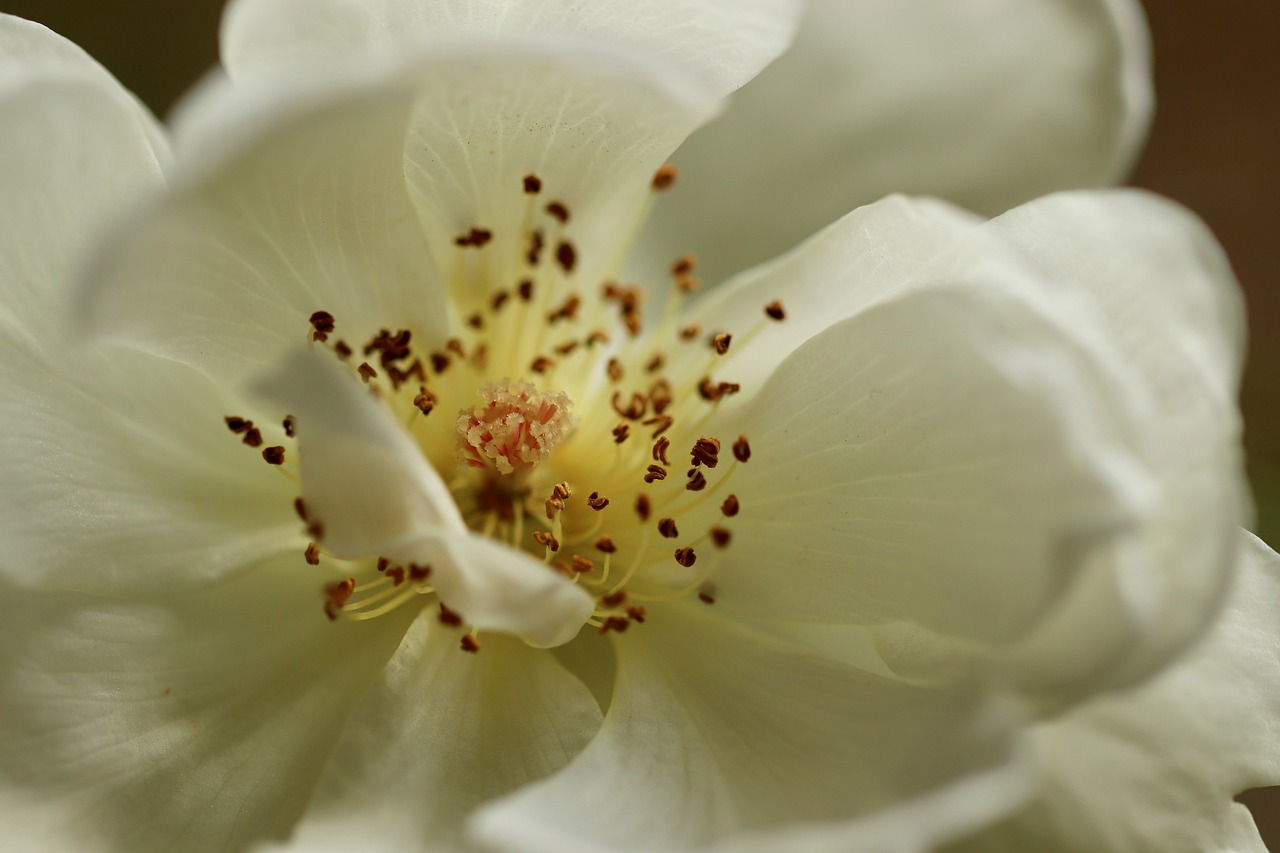
Identifying Common Pests
When it comes to maintaining the beauty of your roses, being able to identify common pests is crucial. These little invaders can wreak havoc on your beloved blooms if not caught early. So, how can you tell if your roses are under attack? Let's dive into some of the most frequent offenders and what to look for!
One of the most notorious pests is the aphid. These tiny, soft-bodied insects can be found in clusters on the undersides of leaves and on new growth. They suck the sap from the plant, causing leaves to curl and distort. If you notice a sticky residue on your roses, known as honeydew, it's a sure sign that aphids are nearby. To combat them, you can use a strong stream of water to knock them off or introduce natural predators like ladybugs.
Another pest to watch out for is the Japanese beetle. These shiny, metallic green bugs love to munch on rose petals and foliage, leaving behind a skeletonized appearance. If you see these beetles, it's time to take action! Hand-picking them off your plants can be effective, or you can set up traps to catch them before they do too much damage.
Don't forget about spider mites, especially during hot, dry weather. These minuscule pests can be tricky to spot, but if you notice a fine webbing on your roses or tiny yellow spots on the leaves, they might be the culprits. Increasing humidity around your roses can help deter spider mites, and washing your plants with water can also help eliminate them.
Lastly, keep an eye out for whiteflies. These small, white insects flutter around your plants when disturbed and can cause significant stress to your roses by sucking out their vital juices. They often leave behind a sticky residue and can attract other pests like ants. To manage whiteflies, consider using insecticidal soap or neem oil, which can be effective in controlling their population.
In summary, being vigilant and observant is key to keeping your roses healthy. Regularly inspect your plants for signs of pests, and don't hesitate to take action at the first sign of trouble. Remember, a healthy rose is a beautiful rose, and with a little attention, you can keep those pesky pests at bay!
- What are the signs of pest infestation on roses? Look for discolored leaves, holes in petals, sticky residue, or visible insects.
- How can I naturally control pests on my roses? Introducing beneficial insects like ladybugs, using insecticidal soap, and maintaining plant health can help.
- Is it necessary to use chemical pesticides? It's best to try natural methods first, but if the infestation is severe, you may need to resort to chemical solutions.
- How often should I check my roses for pests? Regular inspections, at least once a week, can help you catch any issues early.
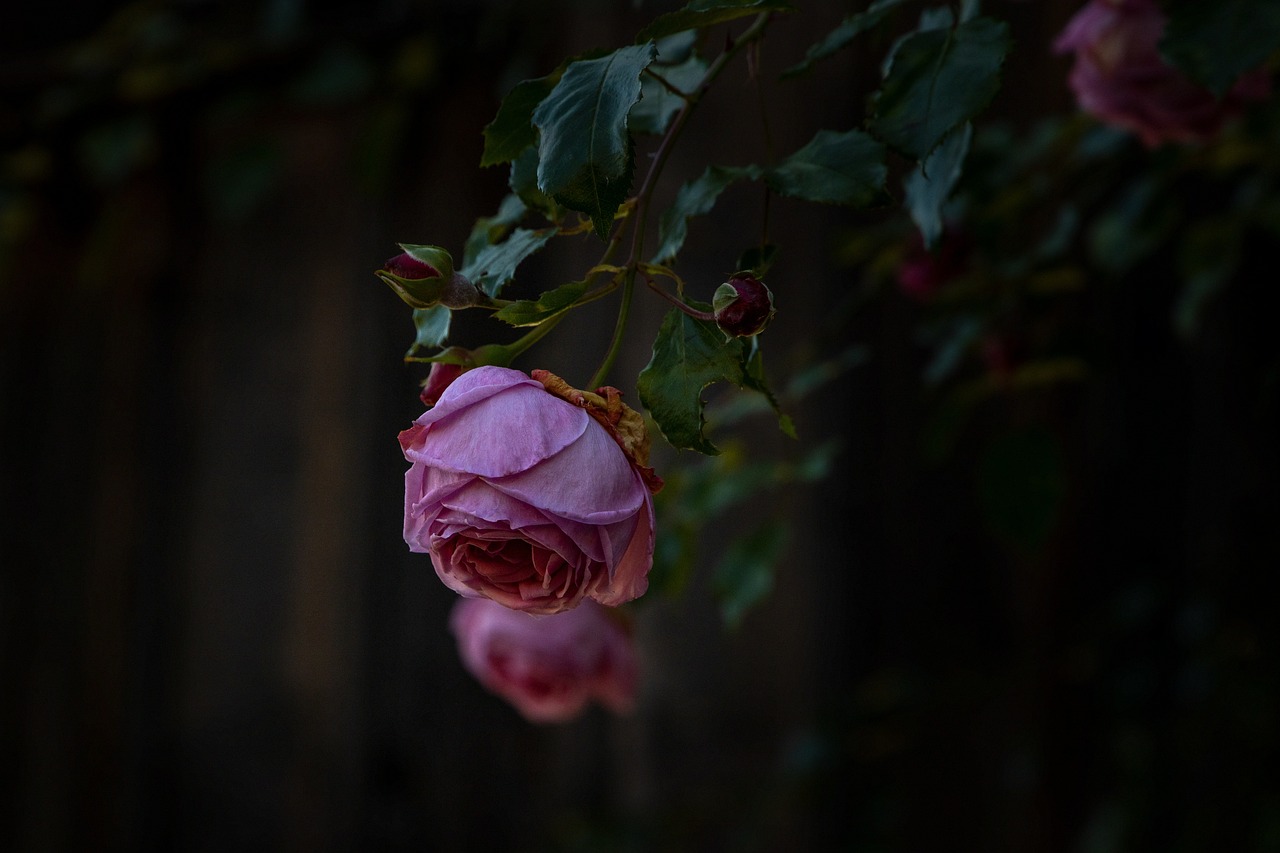
Preventing Rose Diseases
When it comes to growing beautiful roses, prevention is always better than cure. Just like we take precautions to stay healthy, your roses need a little TLC to ward off diseases that can threaten their vibrant blooms. One of the best ways to prevent rose diseases is to ensure that your plants are planted in the right location. Roses thrive in areas with good air circulation and ample sunlight. If they’re crowded or shaded by other plants, they become more susceptible to diseases.
Another key factor is proper watering practices. Overwatering can lead to root rot, while underwatering can stress the plant, making it more vulnerable to infections. Aim to water your roses deeply but infrequently, allowing the soil to dry out slightly between waterings. This mimics the natural conditions roses thrive in and keeps them healthy.
Additionally, maintaining cleanliness in your garden is crucial. Regularly remove fallen leaves and debris around your roses, as these can harbor fungal spores and pests. Consider using a mulch layer to help suppress weeds and retain moisture, but make sure it’s not piled against the stems of your roses, as this can promote rot.
It’s also essential to choose disease-resistant varieties when selecting roses for your garden. Many breeders now offer roses that are bred specifically to resist common diseases such as black spot and powdery mildew. By planting these varieties, you can significantly reduce the risk of disease in your garden.
Lastly, consider implementing a preventive spray program with organic fungicides or homemade remedies. For example, a simple mixture of water and baking soda can help prevent powdery mildew. Applying these treatments early in the season can create a protective barrier for your roses. Here’s a quick overview of some common rose diseases and their prevention methods:
| Disease | Prevention Method |
|---|---|
| Black Spot | Choose resistant varieties, ensure good air circulation, and remove infected leaves. |
| Powdery Mildew | Avoid overhead watering, apply baking soda solution, and ensure proper spacing. |
| Rust | Use resistant varieties and remove affected leaves promptly. |
By following these simple yet effective strategies, you can create a thriving environment for your roses, minimizing the risk of diseases and ensuring that they remain healthy and beautiful throughout the seasons. Remember, a little prevention goes a long way!
- What are the signs of disease in roses? Look for yellowing leaves, spots, wilting, or unusual growth patterns.
- How often should I inspect my roses for diseases? Regular inspections every week or two during the growing season are ideal.
- Can I use home remedies to treat rose diseases? Yes, many home remedies can be effective, but always test them on a small area first.
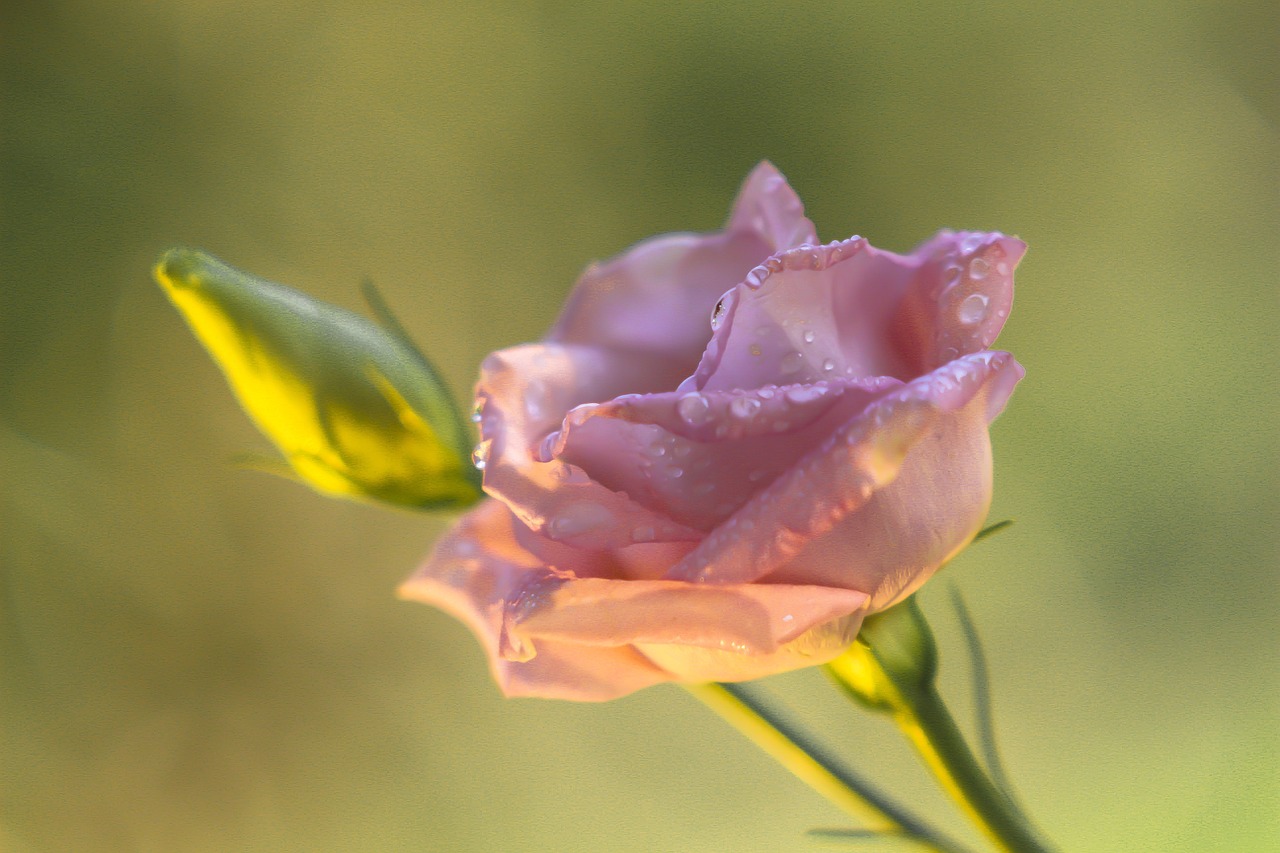
Seasonal Care Tips
When it comes to maintaining beautiful roses, understanding the unique challenges each season brings is crucial. Just like we adapt our wardrobes to the changing weather, roses also require different care depending on the time of year. Let’s break it down season by season, so you can keep your roses thriving and blooming beautifully all year round.
Spring is the time when your roses wake up from their winter slumber. This is the perfect opportunity for pruning, which helps stimulate new growth. Aim to prune your roses when the buds start to swell, usually around late March to early April, depending on your climate. Remove any dead or diseased wood, and cut back healthy stems to encourage bushier growth. Remember, a good rule of thumb is to prune just above a bud that faces outward to promote an open center.
As the weather warms up, it's also essential to fertilize your roses. Use a balanced fertilizer that promotes both foliage and flower development. To maximize effectiveness, apply the fertilizer after pruning, and water thoroughly to help the nutrients penetrate the soil. This will give your roses a strong start as they push out new growth and blooms.
Moving into summer, roses can be particularly thirsty. During the hotter months, ensure your roses receive adequate water—about 1 to 2 inches per week. Morning is the best time to water, as this allows the foliage to dry throughout the day, reducing the risk of fungal diseases. Consider using a soaker hose or drip irrigation to deliver water directly to the roots, minimizing evaporation and keeping the foliage dry.
Additionally, don't forget to deadhead your roses regularly. This means removing spent blooms to encourage more flowers to form. Think of this as giving your roses a little nudge to keep producing! It’s a simple task that can lead to a more vibrant garden. If you notice any signs of pests, such as aphids or spider mites, address these issues promptly to prevent infestations.
As we transition into fall, it’s time to prepare your roses for the colder months ahead. Begin by stopping fertilization around mid-August to allow your roses to harden off before winter. This is also an excellent time for another round of pruning, focusing on removing any dead or weak stems. Consider applying a layer of mulch around the base of the plants; this helps retain moisture and insulates the roots against temperature fluctuations.
Finally, when winter arrives, your roses will need some extra protection. Winterizing your roses is crucial for their survival. In regions with harsh winters, consider wrapping the base of the plants with burlap or using rose cones to shield them from freezing temperatures. Additionally, a thick layer of mulch can protect the roots from extreme cold. Always remember to check for any signs of rot or disease during winter, as these can be detrimental to your plants' health.
In summary, maintaining beautiful roses year-round involves a mix of seasonal care strategies. By understanding the specific needs of your roses in spring, summer, fall, and winter, you can ensure they remain healthy and vibrant, no matter the weather. Just think of your roses as a cherished friend—give them the attention they need, and they will reward you with stunning blooms!
- How often should I water my roses? Water your roses approximately 1 to 2 inches per week, ensuring the soil is moist but not waterlogged.
- When is the best time to prune my roses? The best time to prune is in early spring, just as the buds begin to swell.
- What type of fertilizer should I use? A balanced fertilizer that supports both foliage and blooms is ideal for roses.
- How can I protect my roses in winter? Use burlap wraps or rose cones, and apply a thick layer of mulch to insulate the roots.
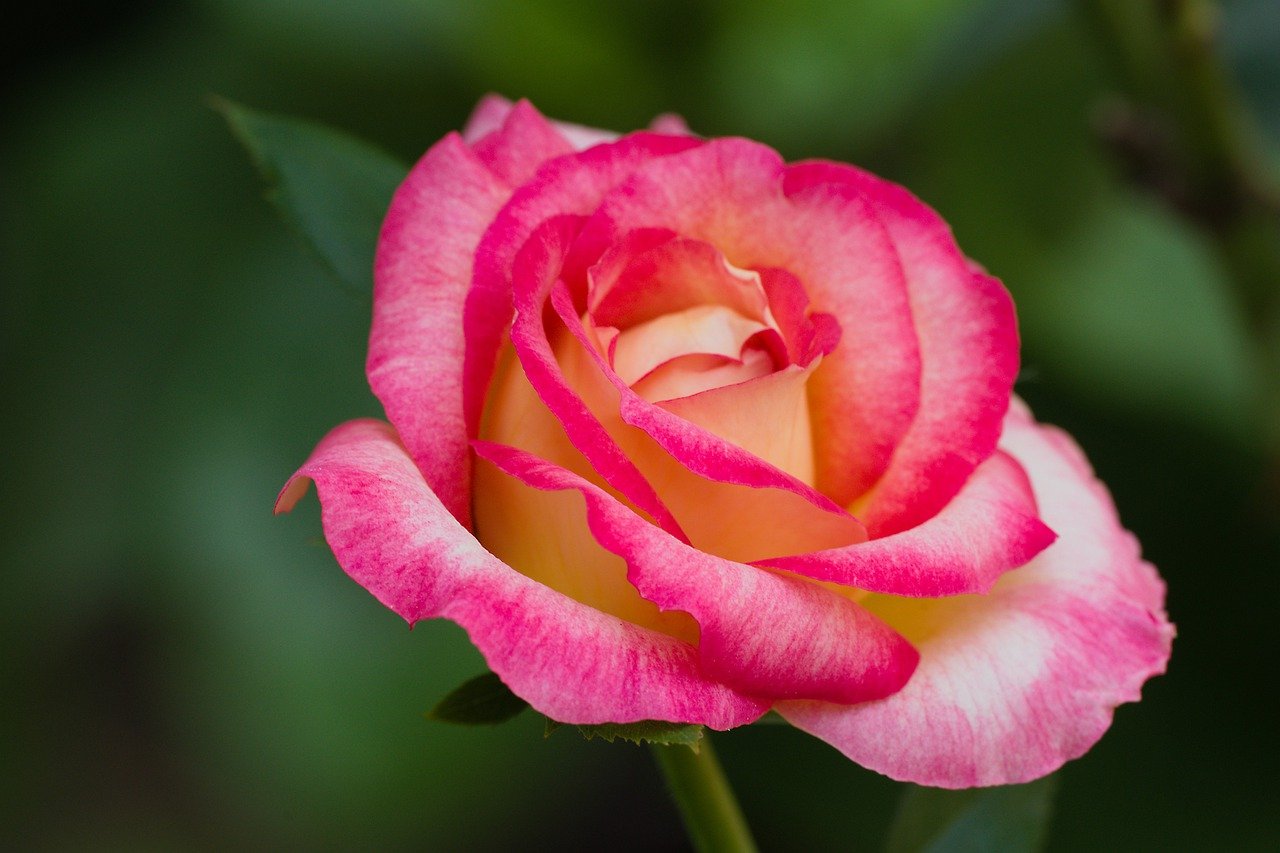
Spring Pruning Techniques
Spring is an exciting time for gardeners, especially when it comes to pruning roses. As the days get longer and warmer, your roses will start to wake up from their winter slumber, and this is the perfect opportunity to give them a fresh start. Pruning not only helps to shape the plant but also encourages healthy growth and vibrant blooms. So, how do you go about it? Let’s dive into some essential techniques!
First and foremost, it's important to understand that not all roses require the same pruning techniques. For instance, Hybrid Teas and Floribundas benefit from a more vigorous pruning, while Climbing Roses need a gentler touch. Generally, you should aim to prune your roses when the buds begin to swell, which indicates that they are ready to burst into life. This usually occurs in early spring, but the exact timing can vary based on your location.
When it comes to the actual pruning process, here are some key steps to follow:
- Gather the Right Tools: Make sure you have sharp pruning shears, gloves, and possibly a saw for thicker stems. Clean tools are crucial to prevent the spread of disease.
- Remove Dead or Diseased Wood: Start by cutting away any dead, damaged, or diseased branches. This not only helps the plant focus its energy on healthy growth but also reduces the risk of disease.
- Shape Your Roses: Aim for an open center to improve air circulation. This means cutting back branches that cross over each other and leaving the strongest, outward-facing buds. A good rule of thumb is to prune back about one-third of the plant’s height.
- Cut at an Angle: Always make your cuts at a 45-degree angle, about 1/4 inch above a bud. This helps prevent water from sitting on the cut surface, which could lead to rot.
Now, let’s talk about the benefits of spring pruning. Think of it as giving your roses a haircut. Just like how we feel refreshed after a trim, roses thrive when they are pruned correctly. They experience improved air circulation, which reduces the risk of fungal diseases. Additionally, pruning encourages the growth of new stems and blossoms, leading to a more beautiful and bountiful display throughout the growing season.
However, be cautious not to over-prune. Cutting too much can stress the plant and lead to poor growth. It’s always better to err on the side of caution, especially if you’re new to pruning. If you’re unsure, you can always start with less and adjust in subsequent years as you learn how your roses respond.
In conclusion, spring pruning is a vital part of rose care that sets the stage for a stunning display of flowers. By following these techniques, you’ll not only maintain the health of your roses but also enhance their natural beauty. So grab those shears and get ready to transform your garden into a blooming paradise!
Q: When is the best time to prune my roses?
A: The best time to prune roses is in early spring when the buds start to swell and before new growth begins.
Q: What tools do I need for pruning?
A: You will need sharp pruning shears, gloves, and possibly a saw for thicker branches.
Q: How much should I prune?
A: Generally, you should aim to prune back about one-third of the plant’s height, but this can vary based on the rose variety.
Q: Can I prune my roses in the fall?
A: It's best to avoid heavy pruning in the fall as it can stimulate new growth that may not survive the winter.

Winter Protection Strategies
When winter rolls around, the beauty of your roses can be at risk from harsh weather conditions. Just like how we bundle up in warm clothes to shield ourselves from the cold, your roses need a bit of extra care to survive the frigid temperatures. The key to ensuring your roses thrive through winter lies in protection strategies that cater to their specific needs.
One of the most effective ways to protect your roses is through mulching. Applying a thick layer of organic mulch around the base of your plants not only helps to retain moisture but also insulates the roots from freezing temperatures. Aim for a mulch layer of about 2 to 4 inches. Materials like wood chips, straw, or shredded leaves work wonders. Just be sure to keep the mulch a few inches away from the stems to prevent rot.
Another important strategy is to prune your roses before the first frost. This might sound counterintuitive, but trimming away dead or weak branches helps the plant conserve energy during the cold months. Think of it as giving your roses a fresh start; they can focus on surviving rather than maintaining extra foliage. However, don't go overboard! Prune lightly and avoid cutting back too much, as this can expose the plant to more cold.
In regions where temperatures drop significantly, consider using rose cones or burlap wraps. These protective coverings act like cozy blankets for your plants. Choose a cone that is breathable to prevent moisture buildup, which can lead to mold. If you opt for burlap, wrap the stems and base of the plant, securing it with twine. This method also helps shield your roses from harsh winds that can dry them out.
It's also essential to monitor the soil moisture during the winter months. While your roses may not require as much water as they do in the warmer seasons, they still need some hydration. If the soil is too dry, it can lead to stress on the roots. A light watering before the ground freezes can help keep the moisture levels balanced. Just remember, overwatering can be just as harmful as underwatering!
Lastly, be vigilant about snow cover. A light blanket of snow can actually provide excellent insulation for your roses. If you live in a snowy area, consider leaving the snow where it falls, as it can protect the plants from extreme temperatures. However, if you experience heavy snowfalls, gently brush off excess snow to prevent any branches from breaking under the weight.
In summary, protecting your roses during winter is not just about keeping them alive; it's about setting them up for a vibrant return come spring. By implementing these strategies—like mulching, pruning, using protective coverings, monitoring soil moisture, and embracing natural snow cover—you can ensure your roses remain healthy and beautiful, ready to bloom again when the warmer weather arrives.
- How much should I prune my roses in winter?
Prune lightly, focusing on dead or weak branches. Avoid cutting back too much to prevent exposing the plant to cold.
- Is it necessary to mulch my roses for winter?
Yes, mulching is essential as it helps insulate the roots and retain moisture, protecting your roses from freezing temperatures.
- Can I use regular soil for my roses in winter?
It's best to ensure your soil is well-draining and not overly compacted. Regular soil can work, but be cautious of moisture levels.
Frequently Asked Questions
- What are the best types of roses for beginners?
If you're just starting out, consider varieties like Knock Out Roses or Floribunda Roses. These types are known for their hardiness and low maintenance requirements, making them perfect for novice gardeners.
- How often should I water my roses?
Generally, roses need about 1 inch of water per week, either from rainfall or irrigation. However, during hot summer months, you might need to water them more frequently. Always check the soil moisture before watering!
- What is the ideal pH level for rose soil?
The ideal pH level for roses is between 6.0 and 6.8. You can test your soil using a simple pH test kit available at garden centers. If the pH is too low or too high, you can amend it with lime or sulfur to create a more suitable environment.
- How do I prevent pests from damaging my roses?
Regularly inspect your roses for signs of pests like aphids or spider mites. You can use natural remedies such as neem oil or insecticidal soap to keep them at bay. Additionally, maintaining healthy plants through proper care will make them less susceptible to infestations.
- When is the best time to prune my roses?
The best time to prune roses is in early spring, just as new growth begins. This helps to encourage healthy blooms and shape the plants. Remember to use clean, sharp tools to make clean cuts!
- What should I do to protect my roses in winter?
To protect your roses during winter, consider applying a thick layer of mulch around the base. You can also wrap the canes with burlap or use protective coverings to insulate them from harsh temperatures.
- Are organic fertilizers better for roses?
Organic fertilizers can be beneficial as they improve soil health over time and provide a slow release of nutrients. However, chemical fertilizers can also be effective if used correctly. It ultimately depends on your gardening philosophy and the specific needs of your roses.
- How do I know if my roses are getting enough nutrients?
Signs of nutrient deficiency include yellowing leaves, stunted growth, and poor blooming. Regularly feeding your roses with a balanced fertilizer can help ensure they receive the necessary nutrients for vibrant health.



















